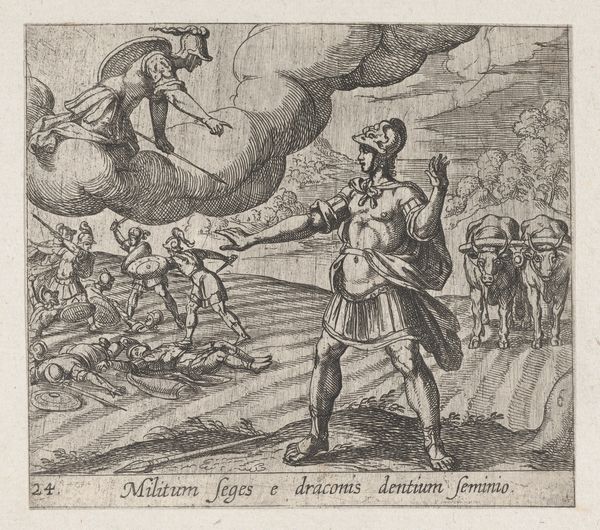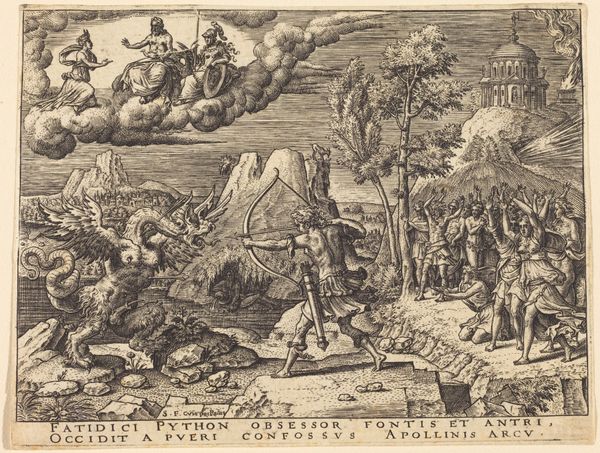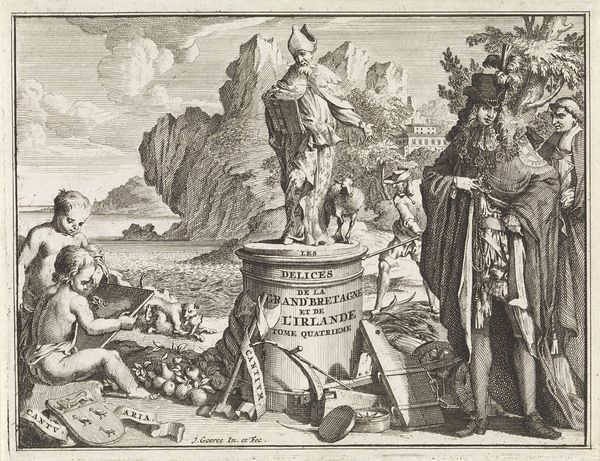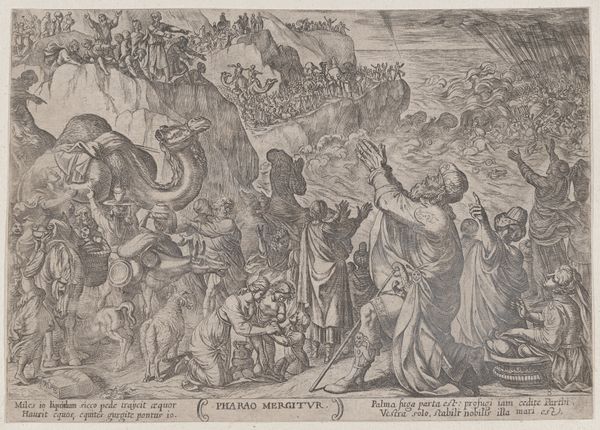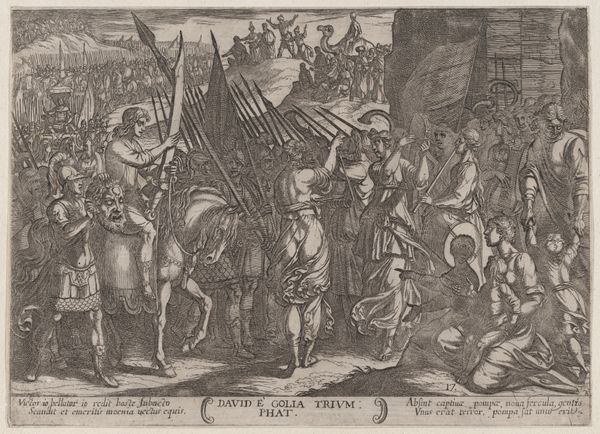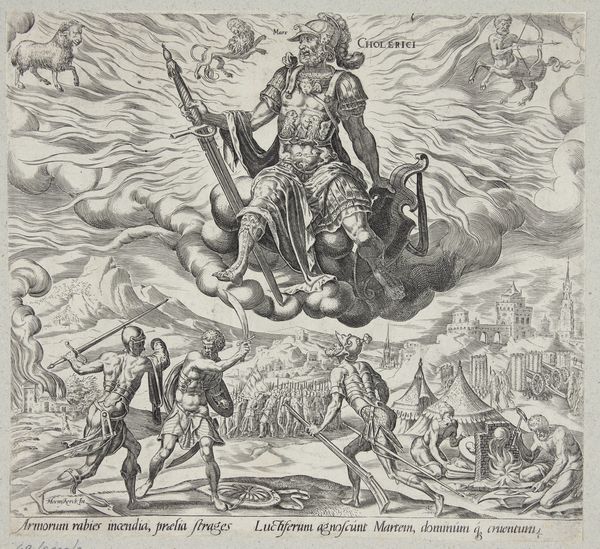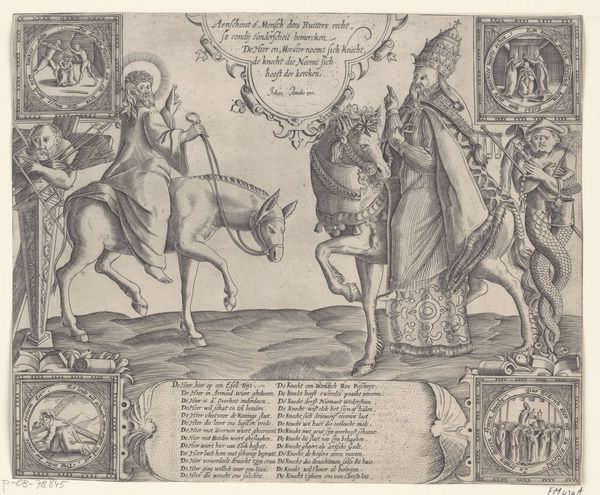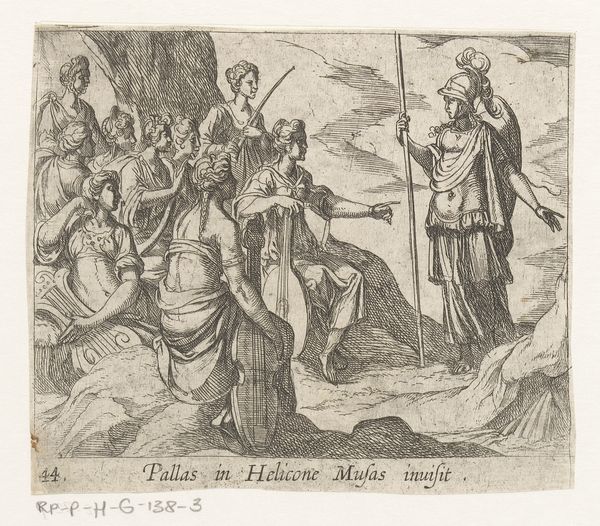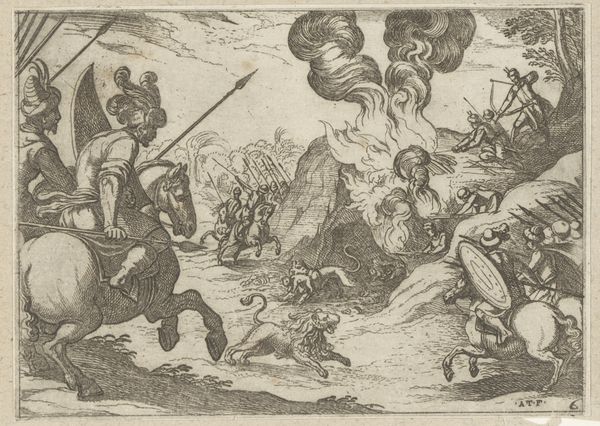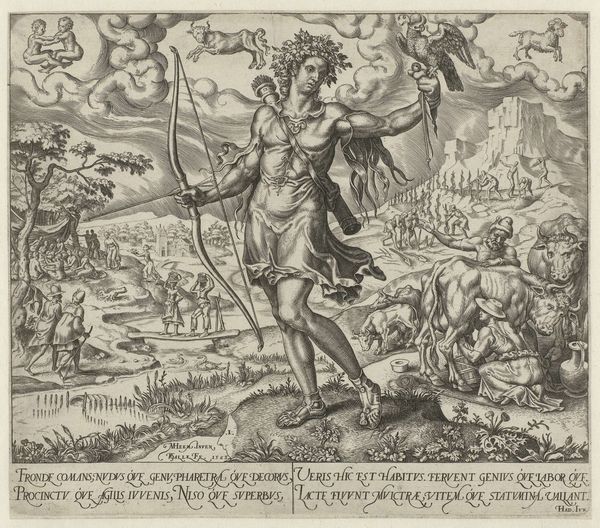
Plate 19: Minerva at Envy's Cave (Pallas Invidiam in Aglaurum incitat), from Ovid's 'Metamorphoses' 1606
0:00
0:00
drawing, print, engraving
#
drawing
#
weapon
#
allegory
#
baroque
# print
#
figuration
#
soldier
#
history-painting
#
engraving
Dimensions: Sheet: 4 1/8 × 4 9/16 in. (10.5 × 11.6 cm)
Copyright: Public Domain
Editor: This is "Plate 19: Minerva at Envy's Cave (Pallas Invidiam in Aglaurum incitat), from Ovid's 'Metamorphoses'" by Antonio Tempesta, dating back to 1606. It's an engraving, and the scene is quite stark. I’m struck by the contrast between Minerva's crisp armor and the twisted figure in the cave. What does this engraving tell you? Curator: Considering its materiality, this engraving isn't just an image, it's an object born from specific processes: the artist's hand, the metal plate, the printing press. It reveals much about the economics and availability of image production in the 17th century. Notice how the line work defines not only form, but also texture and atmosphere. How might the multiple states, that is, editions, of this print affect its value and accessibility as a visual commodity at the time? Editor: So, the physical process of creating the print influenced its role in society. I hadn't thought about that. Are you suggesting that it's important to consider the labour that went into it? Curator: Absolutely! The skilled labour involved in creating the plate, the paper, the ink, the press operation - each element represents a stage in the print's journey as a tangible and consumable product. Think about where these materials came from and who produced them. The engraver is only one node in a large network of production. Editor: That shifts my perspective. I tend to focus on the narrative—Minerva, envy—but you're highlighting the industrial side of art. Curator: Indeed. Consider the social context: How does access to these images, mediated through printmaking technology, affect the distribution of knowledge and power in early modern Europe? Whose stories get told, and how are they disseminated? Editor: Wow, I am thinking about this very differently now. Thank you, this was very enlightening! Curator: My pleasure. By considering the material conditions of art making, we can develop a far deeper understanding of the historical context surrounding the work of art.
Comments
No comments
Be the first to comment and join the conversation on the ultimate creative platform.
